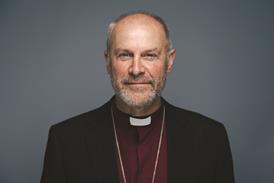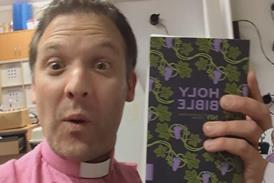‘Cornerstone’ - the meaning behind Hillsong’s worship anthem
By  Derek Walker2021-07-21T13:45:00
Derek Walker2021-07-21T13:45:00

Source: Hillsong
’Cornerstone’ is a modern take on an old hymn, written by Reuben Morgan in the midst of a gun shooting. Derek Walker explains more
Related articles
-
 Opinion
OpinionHillsong’s VIP experience shows worship music has a celebrity problem
2021-10-19T08:43:00Z By Tom Read
For a few extra dollars, you can enjoy an “intimate pre-show artist experience” with Hillsong United and Chris Tomlin. But Tom Read wonders what Jesus would make of it…
-
 Opinion
OpinionChoirs help us connect with God. Let’s bring them back to our churches
2021-09-16T13:19:00Z By Calum Carswell
Many charismatic evangelical churches haven’t had a choir in years. But research suggests they aid our worship, and might even work alongside your existing worship band, says Calum Carswell
-
 Reviews
Reviews‘Here I am to worship’: the story behind Tim Hughes’ chart-topping worship song
2021-08-05T08:18:00Z By Derek Walker
Inspired by a Stephen King story, the song that Matt Redman famously said was "not that strong” was written by Hughes when he was just 19. Despite a slow start, it went on to win multiple awards and be covered by a host of famous Christian artists
More from Reviews
-
 Reviews
ReviewsOur forefathers used Christian theology to justify slavery. David Olusoga’s Empire is right to be critical
2025-12-10T12:41:00Z By Dr Daniel Johnson
David Olusoga’s three-part BBC series on the British empire has provoked widespread debate. UK Christians should honestly confront their past without trying to balance the scales, suggests Dr Daniel Johnson
-
 Reviews
ReviewsWhat Celebrity Race Across the World taught me about the Christian life
2025-12-09T14:16:00Z By Emma Hide
As the third season of Celebrity Race Across the World draws to a close, Emma Hide says the show offers Christians some important lessons in doing life with Christ. The final destination is important, she says, but journeying with Jesus is what really changes us
-
 Reviews
ReviewsThis Advent devotional reveals the Holy Spirit’s role in Christmas
2025-12-09T09:48:00Z By Dr Joshua Bloor
For her new 25 day Advent devotional, award-winning author Cynthia Ruchti turns her attention to the role of the Holy Spirit in the Christmas story, says our reviewer
- Issues
- Topics A-Z
- Writers A-Z
- © 2025 Premier Christianity
Site powered by Webvision Cloud


























